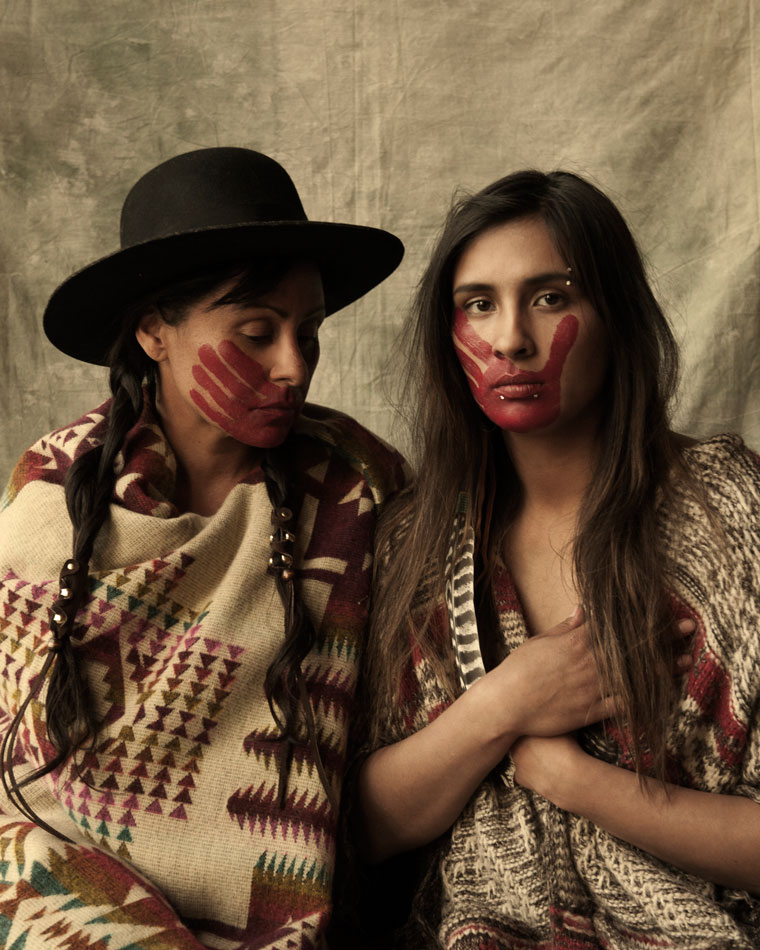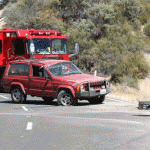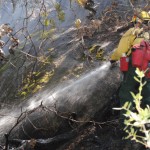
Photo by Matt Rebula
It’s mystifying when the forces of nature come together to create a dynamic whose time has come. Women moving into self-determination on a global scale is one such example. The emergence of Germany’s Leica Camera Company resulting in “the Freedom Train” during WWII, establishing a progressive culture for more than 100 years, is another. As a result, Leica Photography Galleries champion storytelling world-wide through the artist’s lens, and this is one such story.
When Leica contacted renowned photographer, director and videographer Deborah Anderson and invited her to do a show in six months for its Los Angeles gallery, it offered to provide a Leica SL and asked what she’d shoot? Anderson’s answer didn’t immediately present itself.
“The Leica project arrived while I was relocating to Idyllwild, a place where I could finally hear my inner voice. The last four years of transformation through discord taught me to connect to my life and work in new ways,” Anderson confides. “Signs and synchronicities led me to research Native life for this project and I immersed myself. Reading books like ‘The Lakota Way’ and ‘Braiding Sweet Grass’ were among many influences. Stories of courage and humility teach us how to walk in the world, and helped me vision this project and formulate the approach I would take.
“I’m a very blessed spirit. This human journey gives me an opportunity to shift consciousness through my work. I see through an optimistic and hopeful lens, working from a place of deep gratitude, asking to see beauty even in worlds torn to pieces. Documenting the physical and spiritual lives of the Lakota women of Pine Ridge was a reality I could barely fathom at the onset,” Anderson said.
Petroglyphs found in the Black Hills of South Dakota provide evidence of habitation by Native peoples for more than 7,000 years. Long before the existence of the United States, White Buffalo Woman appeared to the Oglala Lakota during a period of severe blight and she gifted The People the peace pipe, which compels a circle of listening. She taught them to remain mindful of the formative power of light, love and compassion, and condemned sexual objectification of women.
Anderson, a multi-cultural woman who lived for two months among the Lakota women in Pine Ridge for this project, said, “I came to understand that I’d been prepared throughout my life for this work … and remain so humbled to be accepted by the Lakota women I came to love.” Anderson continues, “I’m grateful for an ability to connect with a tribe of powerful people, even if they’re not expressing their truth in a visual sense due to drugs or poverty … their integral power is there.”
Anderson remembers, “Listening in a sea of poverty to their stories of loss, suicide, murder and epidemic methamphetamine addiction, juxtaposed by deep ancestral roots, traditional ceremony, prayer and hope, revealed deep cultural richness and connection.
“We are living in a very unconscious world right now. My job, as I see, is to wake up, and my work is to awaken others. To be told they’d been praying for someone who would carry their stories into the world blew me away. What connected for them was my desire to move their story into the world, unedited,” shares Anderson.
“Native women have shown me their warrior spirit lives in the deepest recesses of grief for the dishonoring of one of the world’s richest spiritual cultures. When I sat in front of them, I looked into their eyes and was transported a thousand years. When I closed my eyes, and listened to their music and their prayers, I saw who they are, and I stayed to listen. As I heard their stories, we cried every day, I holding them and they holding me,” Anderson recollects.
“Praying together every day before we shot opened our way to come onto their land as their guests. Everything is an opportunity to grow, to awaken to the gift. This exposé is not about shooting beautiful photos, it is about my deepest work,” adds Anderson.
One of the women photographed had been raped about three weeks prior. When Anderson saw her dressed in traditional robes, she realized she would heal. This is the profound power of cultural heritage.
After two months, Anderson was asked what was her takeaway, to which she thoughtfully responded, “When you remember who you are, everything will change. I see ancient wisdom, I see a decent into fear. Somewhere in the darkness, I see a lighted path, I see the journey home.”
In one family, Anderson was told a daughter committed suicide eight years ago, but they’d never spoken about it until now. Tribal elders said, “We murder and rape our indigenous women, we murder and rape the Earth. Meth addiction breeds sex trafficking by creating debt, it’s rampant and goes unreported on the reservations.”
Globally, 20.9 million, mostly women and children, are sex trafficked in an industry estimated at $99 billion annually by EqualityNow.org. There is no data on the trafficking of Native women, which serves to increase their vulnerability.
Several under-funded grass roots organizations operate in Pine Ridge, such as “Red Dresses,” which originated in Canada and provides important outreach. The woman who runs the “Mothers Against Meth Alliance” lives in a two-bedroom trailer. Anderson observed, she’s doing more work to protect girls than tribal government.
But change is coming. Women artists worldwide are rejecting rape of the Earth and its sacred women. Art of this nature is exemplified by Gina Loring’s visually stunning poem, “Walking Prayers,” and “This Revolution Begins in My Body” by Eve Ensler, both directed and filmed by Anderson, are featured on Ensler’s website OneBillionRising.org. Another example is Manuela Testolini’s foundation “In a Perfect World,” which honors her former husband Prince by building schools in Africa, and supporting educators and homeless youth in underserved classrooms with artistic expression and mentorship.
During Anderson’s two months in Pine Ridge,19 people attached to someone she’d met died of either suicide, murder, car crash involving alcohol, or went missing. “Pine Ridge and most other reservations are prisoner-of-war camps, and meth is killing the children,” Anderson witnessed.
For Anderson, the reservation experience rocked her and for a while. She found herself depressed by the first-hand experience hundreds of years of genocide has created and what she views as the active ripping out of the heart of this planet and its most vulnerable people. She believes it’s our responsibility to use our voices to reeducate the masses to the truth of the sleepwalking that goes on and she encourages the positive use of social media to add your voice to shifting consciousness, because we are all connected.
The documentary’s working title is “Women of the White Buffalo” and features interviews with seven women ranging in age from 7 to 97. Anderson’s focus is to finish the documentary for the 2019 season and benefactors who support this work are invited to connect at www.Coach2Edify.org/womanofthewhitebuffalo.
The Lakota women hope that showing this film in schools, coupled with teaching their creation stories and the cosmic symbolism of the hoop dance, will ultimately bring peace and harmony back to life in the heart of the Lakota.
Anderson’s photography show “Women of the White Buffalo,” is currently featured in the Leica Gallery in Los Angeles through June 25.
The exhibition will be featured by two Idyllwild galleries from June 30 to July 22. Anderson’s Wyld Sage gallery is located on the ground floor of The Fort and the Art Alliance of Idyllwild’s Courtyard Gallery on Ridgeview will host an opening reception from 2 nto 6 p.m. Saturday, June 30.
Anderson will host a closing reception at 2 p.m. Sunday, July 22, at the Courtyard Gallery’s adjoining presentation space. Anderson will screen excerpts from her documentary film and talk about the project’s creation. The exhibition opens at the Lieca Gallery in New York City in early 2019.










